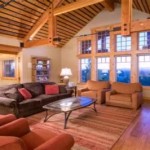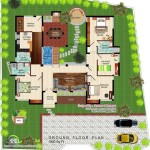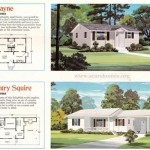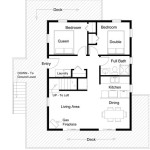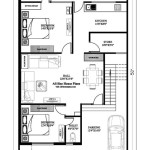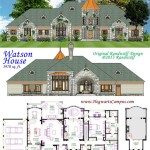5 Bedroom House Floor Plans: Optimizing Space and Functionality
Five-bedroom house floor plans represent a significant investment in space, designed to accommodate larger families, multi-generational living, or individuals requiring ample room for hobbies, home offices, or guest accommodations. Successfully navigating the design process for such a dwelling requires careful consideration of layout, functionality, and the specific needs of the occupants. Effective five-bedroom house floor plans prioritize efficient use of space, maximizing both privacy and communal areas.
The development of a five-bedroom house floor plan necessitates a thorough understanding of the intended occupants’ lifestyle. This includes considering factors such as daily routines, entertainment habits, and potential future needs. A well-designed plan will not only meet current requirements but also offer flexibility for adaptation over time. The arrangement of bedrooms, living areas, kitchen, and bathrooms must be integrated to create a cohesive and functional living environment.
Key Considerations in 5-Bedroom House Floor Plan Design
Several key aspects need careful attention when designing or selecting a five-bedroom house floor plan. These considerations directly impact the usability and comfort of the home.
Bedroom Placement and Privacy: The arrangement of bedrooms is paramount. Ideally, the master suite should be located away from the secondary bedrooms to ensure privacy. This can be achieved by placing the master suite on one side of the house or on a separate level. Children's bedrooms might be grouped together, potentially with a shared bathroom. Guest bedrooms could be situated near an entrance or living area for easy access and minimal disruption to the family's private spaces. Furthermore, consider the orientation of each bedroom relative to the sun. Eastern exposure is desirable for morning light, while western exposure can lead to excessive heat in the afternoon, requiring additional cooling measures.
Living Area Configuration and Flow: The living areas, including the living room, family room, dining room, and kitchen, should be strategically positioned to facilitate both social interaction and individual relaxation. Open-concept designs are popular, allowing for seamless transition between these spaces and fostering a sense of spaciousness. However, it is crucial to define distinct zones within the open layout using furniture arrangement, changes in flooring, or partial walls. The flow between these areas should be intuitive and unobstructed, promoting ease of movement and preventing congestion. The kitchen, often considered the heart of the home, needs adequate counter space, storage, and appliance placement. Consider the kitchen’s relationship to the dining area and outdoor spaces for convenient access during meal preparation and entertaining.
Bathroom Allocation and Functionality: The number and placement of bathrooms are crucial for a five-bedroom house. A minimum of three full bathrooms is generally recommended, with the master suite ideally having its own en-suite bathroom. Consider a jack-and-jill bathroom connecting two bedrooms, which can save space and provide convenience for children or guests. A powder room, located near the main living area, is essential for guests. The functionality of each bathroom should be carefully considered, including the size of the shower or tub, the amount of counter space, and the placement of fixtures. Adequate ventilation is also essential to prevent moisture buildup and mold growth.
Popular 5-Bedroom House Floor Plan Styles
Various architectural styles lend themselves well to five-bedroom house floor plans. The choice of style will influence the overall aesthetic and layout of the home.
Two-Story Layouts: Two-story homes are a common choice for five-bedroom designs, as they maximize square footage on a given lot. The typical arrangement involves placing the bedrooms on the upper level, ensuring privacy and separation from the main living areas downstairs. The master suite is often located on the second floor, providing a retreat for the homeowners. Two-story designs can be adapted to a wide range of architectural styles, from traditional to contemporary.
Ranch-Style Designs: While less common for five-bedroom homes due to the larger footprint required, ranch-style layouts offer the advantage of single-level living. This can be particularly appealing for individuals with mobility issues or a preference for avoiding stairs. Ranch-style five-bedroom homes often feature a sprawling layout with the bedrooms clustered together on one side of the house and the living areas on the other. Careful planning is essential to ensure privacy and minimize travel distances within the home.
Split-Level Designs: Split-level homes offer a unique layout with different levels connected by short flights of stairs. This design can be effective for separating different zones within the house, such as the bedrooms, living areas, and a recreation room or home office. Split-level designs can be well-suited for sloped lots, as they can be adapted to the terrain. However, they may not be ideal for individuals with mobility issues due to the multiple levels and stairs.
Cape Cod and Colonial Styles: These traditional styles often feature a symmetrical facade and a central staircase. Five-bedroom Cape Cod and Colonial homes typically have two stories, with the bedrooms located on the upper level. These styles often incorporate elements like dormers, gable roofs, and window shutters, adding to their charm and character.
Considerations for Specific Needs within a 5-Bedroom Home
Beyond the general layout, addressing specific needs and preferences within a five-bedroom home plan enhances its overall functionality and suitability. These considerations can vary widely depending on the occupants.
Multi-Generational Living: If the home is intended for multi-generational living, careful consideration should be given to creating separate living spaces for different family units. This may involve including a separate suite with its own bathroom and kitchenette, allowing for privacy and independence. Shared living areas, such as the kitchen and dining room, can serve as communal spaces for family gatherings. Accessibility features, such as ramps or elevators, may be necessary to accommodate elderly family members.
Home Offices and Remote Work: The increasing prevalence of remote work necessitates the inclusion of dedicated home office spaces. In a five-bedroom house, one or more bedrooms can be converted into home offices, providing a quiet and productive workspace. Consider the need for natural light, adequate electrical outlets, and internet connectivity. Soundproofing may also be necessary to minimize distractions. A well-designed home office should be separate from the main living areas to maintain a clear distinction between work and personal life.
Entertainment and Recreation Spaces: A five-bedroom house offers ample opportunity to create dedicated entertainment and recreation spaces. This may include a home theater, a game room, or a dedicated playroom for children. The size and layout of these spaces will depend on the intended use and the occupants' preferences. Consider the need for adequate soundproofing, storage, and comfortable seating. Outdoor living spaces, such as patios, decks, and swimming pools, can also be incorporated into the overall design, extending the entertainment options.
Accessibility and Aging in Place: Designing a five-bedroom house with accessibility in mind allows for comfortable living for individuals of all ages and abilities. This may involve incorporating features such as wider doorways, grab bars in bathrooms, and lever-style door handles. Single-story layouts or the inclusion of elevators can also enhance accessibility. Aging in place design principles focus on creating a home that can adapt to the changing needs of its occupants over time, allowing them to remain independent and comfortable as they age.
Optimizing Space and Functionality
The ultimate goal of a five-bedroom house floor plan is to maximize the use of space and create a functional and comfortable living environment. This can be achieved through careful planning, attention to detail, and a focus on the specific needs and preferences of the occupants.
Storage Solutions: Adequate storage is essential in any home, but it is particularly important in a five-bedroom house where there are likely to be more occupants and more belongings. Consider incorporating built-in storage solutions, such as shelving units, cabinets, and walk-in closets. Utilize vertical space to maximize storage capacity. Attic and basement storage can also be valuable assets, providing space for seasonal items and infrequently used belongings.
Natural Light and Ventilation: Maximizing natural light and ventilation can significantly enhance the comfort and livability of a five-bedroom house. Incorporate large windows and skylights to bring in natural light. Position windows strategically to capture prevailing breezes and promote cross-ventilation. Consider the use of light wells or solar tubes to bring natural light into interior spaces that may not have direct access to windows.
Flexibility and Adaptability: A well-designed five-bedroom house floor plan should be flexible and adaptable to changing needs over time. Consider incorporating multi-purpose rooms that can be used for different functions as needed. For example, a spare bedroom could be used as a home office, a guest room, or a playroom. Designing for flexibility ensures that the home can adapt to the evolving needs of its occupants.
Energy Efficiency: Incorporating energy-efficient features into the design of a five-bedroom house can significantly reduce energy consumption and lower utility bills. This may involve using energy-efficient windows and doors, insulating walls and ceilings properly, and installing energy-efficient appliances. Consider the orientation of the house to maximize solar gain in the winter and minimize solar heat gain in the summer. Installing solar panels can also be a cost-effective way to generate renewable energy.
Creating a five-bedroom house floor plan is a complex process that requires careful planning and attention to detail. By considering the key aspects discussed above, it is possible to design a home that meets the specific needs and preferences of its occupants and provides a comfortable, functional, and enjoyable living environment.

Room To Grow 5 Bedroom House Plans Houseplans Blog Com

European Style House Plan 5 Beds 3 Baths 2349 Sq Ft 36 442 Bedroom Plans Single Story Floor Affordable

Manchester Homes The Paddington 5 Bedroom Floor Plan Modular Home Plans Luxury House Custom

5 Bedroom Apartment Plan Examples

Mediterranean Style House Plan 5 Beds 3 Baths 4457 Sq Ft 320 1469 Plans One Story Bedroom 6

5 Bedroom Open Concept House Plans Blog Eplans Com

Traditional Style House Plan 5 Beds 2 Baths 2298 Sq Ft 84 218 Single Y Plans Bedroom

5 Room Bungalow With Rectangular Floor Plan Ceramic Houses

Beautiful House Plan With Five Bedrooms

5 Bedroom 4 Bath House Plans


